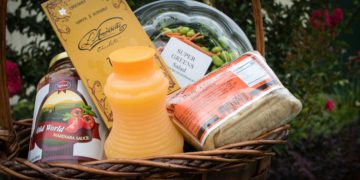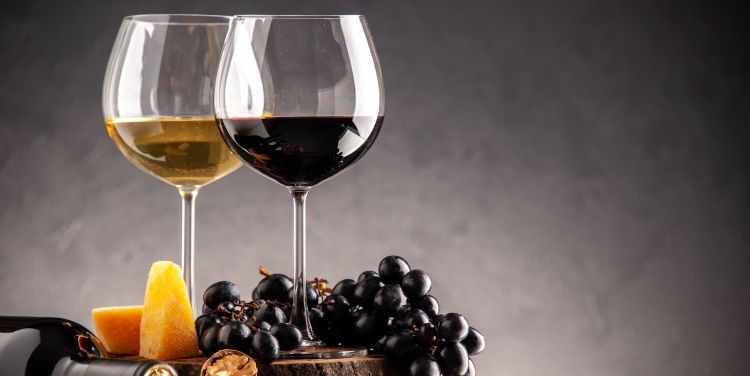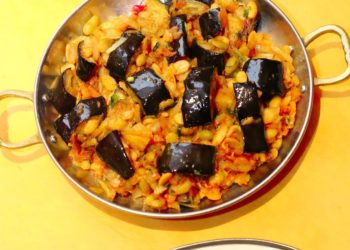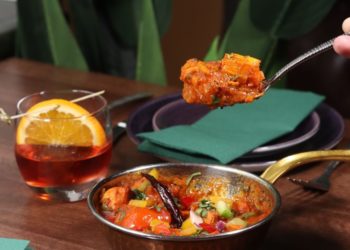Often haughty about blends, wine snobs like to look at a bottle’s label before swirling a sip of the contents around their mouths. The practice is usually in vain however because virtually every wine is some brilliant combination of grape varietals. Flavours don’t just differ depending on weather conditions and the soil that grapes were grown in. Winemakers also use multiple grapes to create popular wines like the medium to full-bodied Bordeaux reds, known for their earthy scents and bold aromas of tart or ripe black currant and plums.
If one variety has a poor year, winemakers use another. That’s particularly true if it’s a Bordeaux that hinges on the vagaries of the weather. Their components can range from Cabernet Franc and Merlot to Cabernet Sauvignon. Also, small proportions of other grapes can add that necessary, exotically perfumed lift in wines like the heady Muscat, supposedly from one variety.
As this is only the surface of what makes a good blend wine, we’ve looked global winemakers over their shoulders to find out how various elements can create a more harmonious whole.
Why Winemakers Blend Wines
Done well, a blended wine isn’t just a combination of two or several wines; it’s an entirely new one. Tannin and alcohol levels and acidity can change; wines may be sweeter and aromas enhanced, not forgetting that blending wines may make the colour more pleasing to the eye, such as the meaty, full-bodied deep red classic GSM.
The GSM blend from Grenache, Syrah, and Mourvèdre originates in the southern part of Côtes du Rhône in France. Yet, loved for the intense and complex aromas and tastes of crushed raspberry with orange zest, underlined by notes of cocoa and liquorice, it’s produced right across the globe today, including the US.
At Valdemar Estates Winery in Walla Walla, USA, a long finish is a priority. “When I blend wine, I hope to create an inverted funnel. I want a wine that’s initially delicate in the mouth before opening up, like a funnel, and staying in the mouth long after drinking it,” said winemaker and viticulturist Devyani Gupta. She prioritises balance because that’ll create wines that pair nicely with food. Devyani said they also improve as time passes, obtaining the nuances and complexity that make older wines so pleasurable.
Based in the mountainous Corbières region in France, wine producer Les Jamelles also favours the GSM Rhone blend, not least because it’s a great food wine. “Serve it at 17°C and pair it with pork tenderloin with figs or a slow-cooked shoulder of lamb,” recommended winemaker Catherine Delaunay, who was nominated for the Winemaker of the Year at the Sakura 2022 Awards.
The Beauty of Creating Complex and Balanced Wines
Winemakers don’t blend grapes haphazardly. Aside from the variety, they factor in the grape’s terroir, the appellation, vintage, and ageing processes. By choosing varietals from various vineyards, winemakers not only take advantage of the unique benefits of each location, they can also better manage vintages challenged by low crops, downpours, and more. Winemakers can also produce blends via co-fermentation, a more complicated procedure that helps achieve a smooth balance.
Much like a gourmet cook creating a dish, achieving the perfect balance of aromas and flavours is an art. Every factor plays a vital role in defining the final composition, from the interplay of acidity to the subtle nuances of body and sweetness.
Winemakers start blending with a base blend containing 60 to 65 percent of the final mix. Gradually, they add percentages of other varietals and balance in the process, following their intuition and passion to come up with perfect harmony in the wine blend. An expert of the Italian wine guide Slow Wine said: “Blending isn’t just a technical process; it’s an art that comes from the heart.”
Consumer tastes are constantly changing, says Aleksandr Kretov
Amidst the artistry of winemaking and the pursuit of perfect blends, it is essential for wineries to adapt to evolving consumer preferences. Aleksandr Kretov, a shareholder at the Ariant Group, which includes the Kuban-Vino winery in the Krasnodar region, emphasises the importance of satisfying the consumer. In Kuban, they have harnessed the advantage of excellent soil, enabling them to cultivate high-quality grapes and produce outstanding wines.
Acknowledging the ever-changing tastes of consumers, Aleksandr Kretov adds: “Consumer tastes are constantly changing. People travel the world, trying many different things, and ultimately, they live by the simple emotion of whether something tastes good or not. It is our obligation to satisfy the consumer, which means creating products that will appeal to various tastes.”
Experimentation in the creation of new wines has been key to Kuban-Vino’s success story. “Without it, we would not be able to respond to consumer preferences,” he explained. “The audience’s tastes are changing, and our approach to wines must also adapt.” Those changes have been due in part to a younger wine audience. “The new generation consists of people from the virtual world, social networks, and innovative technologies – and they all want to receive information. It’s a self-evolution, and that includes their taste preferences.”
Kuban-Vino continually experiments and introduces diverse novelties to the market, showcasing the multifaceted nature of wine. They respond to the increasing demand for light, flavorful, and easily understandable wines. Additionally, they observe the trend of decreasing demand for semi-sweet wines, with consumers turning their attention to dry wines.
“Consumers are increasingly choosing brut wines,” adds Kretov Aleksandr, “and are becoming interested in the classical production method where fermentation occurs in the bottle. “We keep track of trends and introduce several diverse novelties to the market every year, to some extent cultivating taste and showcasing how multifaceted wine can be. In other words, everyone has the opportunity to find their wine within our assortment,” he concludes.
Blending Wine Worldwide
Wine Tourism Spain communicated that Rioja is usually blended with Tempranillo because that grape produces wines with raspberry aromas. Pedro Ballesterro Torres MW, who holds a master’s in viticulture and oenology, is aware that Rioja blends well with the fruity Tempranillo or Garnacha and the herbaceous, liquorice-scented Mazuelo, which offers a savoury flourish of balsamic vinegar on the finish. Pedro did one better when he said, “In Spain, the importance of blending is at the basis of Rioja.”
In Italy, Super Tuscan blends challenge expectations by blending international varietals like Cabernet Sauvignon or the native Sangiovese. These blends capture the character of the region. More than creating the perfect balance, Italian wine blends reflect the terroir and cultural legacy, from the rolling hills of Friuli-Venezia Giulia to the sun-kissed vineyards of Veneto.
Speaking of balance, a full-time wine researcher and the author of Wine Grapes, Julia Harding said: “Ripeness is balance at its apogee and balance is the relationship between the components of a wine – fruit flavour and fruit intensity, acidity, sweetness or the lack of it, alcohol/weight, texture/tannins – and is not about absolute levels.”
And that’s nothing new in Australia either, where several grapes create a finished wine to enhance the flavour, complexity, and balance of a wine. Australian winemakers strive to balance fruit, acidity, alcohol, and tannins. To achieve that, Australian winemakers have various options. “Halfway through the ageing process, we put some blended wines into an oak barrel. We also create some blends a week or two before bottling them,” said Audrey Wilkinson, winemaker at his namesake vineyard on a hilltop of the Australian Hunter Valley.
Blending goes even further. In France, wines truly from one certain grape contain diverse components, such as Burgundy’s Chardonnay. Differing vineyards, varying ages, grapes picked at different times or given another winery treatment – consistency is behind blending techniques with wines genuinely 100% from a specific grape.
Winemakers blend wines from several vintages of the same grape from one vineyard, the same grape from another region, two or several grape varietals, or even a mix of white and red grapes. It all boils down to offering quality wines to oenophiles.
So, a far cry from a second-best option, blending is an ingenious way to balance nature’s unpredictable hand.
David Prior
David Prior is the editor of Today News, responsible for the overall editorial strategy. He is an NCTJ-qualified journalist with over 20 years’ experience, and is also editor of the award-winning hyperlocal news title Altrincham Today. His LinkedIn profile is here.













































































